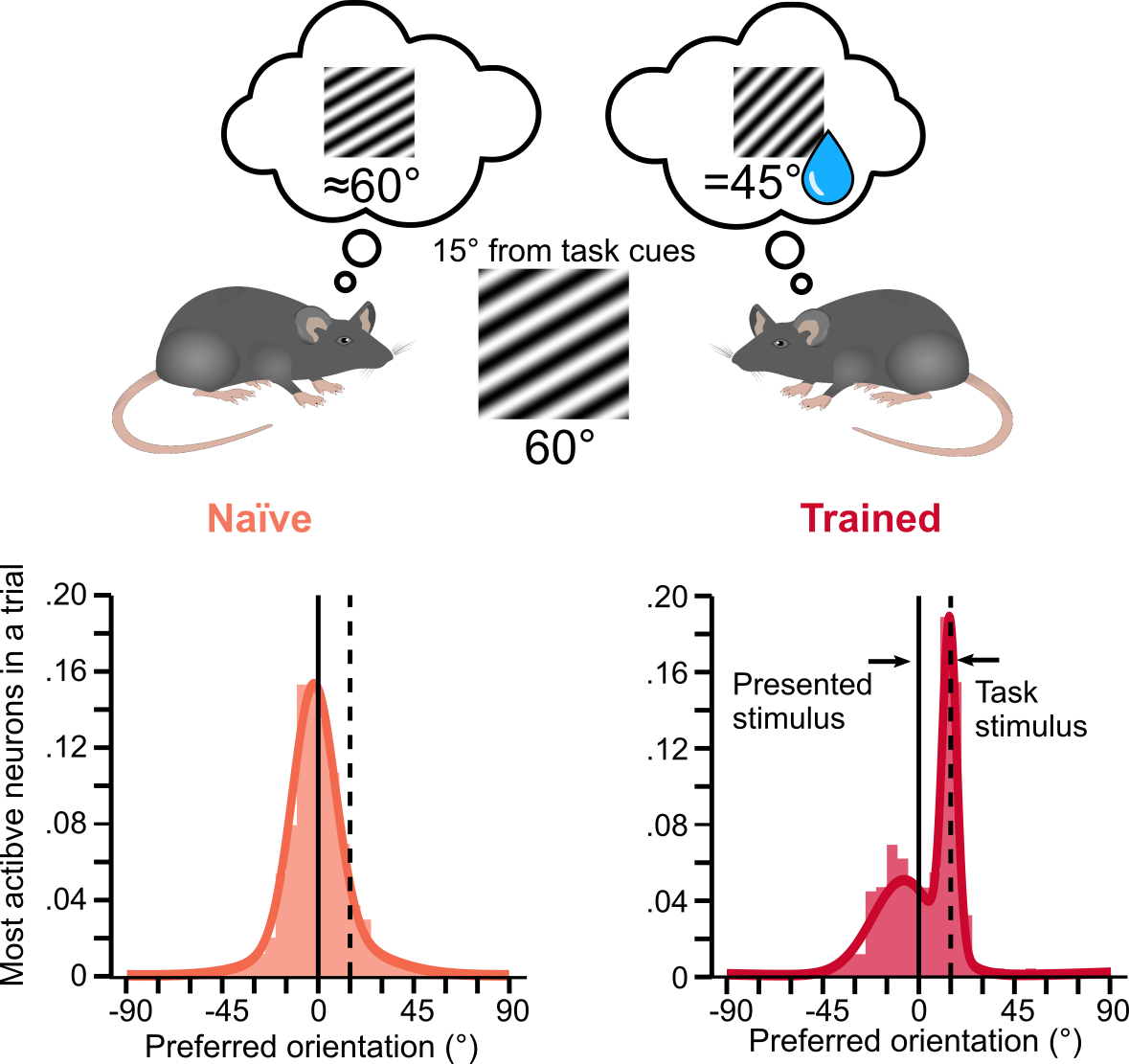Generalization in the Primary Visual Cortex
Corbo J., McClure J.P., Erkat O.B., and Polack P-O. (2022) Dynamic distortion of orientation representation after learning in the mouse primary visual cortex. The Journal of Neuroscience. 42(21):4311–4325
We found that after perceptual training the information on the visual stimuli is modified in V1 to facilitate learning or perception. Indeed, we showed that when a mouse learns to discriminate between two oriented cues (e.g., vertical, and horizontal bars), the patterns of neuronal activity evoked in V1 by those stimuli (we call those specific patterns the representations of the stimuli in V1) are more accurate and reliable than in untrained mice.
Figure
Caption
While these results seemed in line with an improvement of the signal-to-noise ratio of the information on the stimulus orientation, another finding was more surprising. Indeed, since the first recordings of V1 neurons by Hubel and Wiesel (more than 65 years ago), it is well-established that V1 neurons are tuned to the orientation of edges present in their receptive fields. Therefore, it is postulated that the neuronal activity in V1 encodes stimulus orientation. However, we found a first exception to this rule. In mice trained to perform a simple orientation discrimination task, stimuli with orientations close to those of the task stimuli (±15°) activate the same neurons as the task stimuli themselves. Further analyses revealed that this distortion of the orientation representation is due to the existence of ‘rings of inhibition’ in the orientation space that are centered on the orientation of the task cues. Those ‘rings’ prevent neurons tuned for orientations flanking the orientations of the task cues to respond efficiently to their preferred stimuli. Consequently, stimuli flanking the task stimuli in the orientation space are represented as the task stimuli themselves. This generalization mechanism enhances the stability of the representation of the task stimuli, optimizing task performance.



